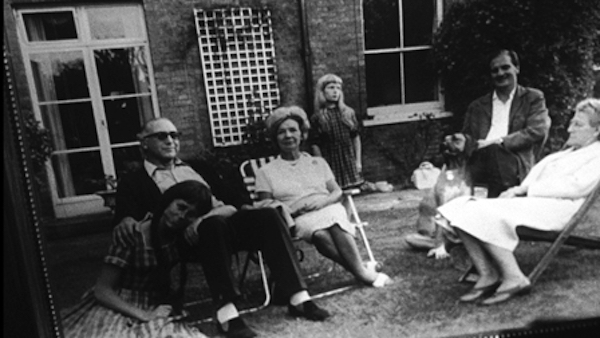Sin and Sinners, Art and Artists
I was never a big Matt Lauer fan, but I love T.S. Eliot. Often I have told friends, “Eat the peach.” Problem is Eliot also wrote:
On the Rialto once.
The rats are underneath the piles.
The jew is underneath the lot.
If that’s not clear enough about his point-of-view, in a 1933 lecture he declared: “Reasons of race and religion combine to make any large number of free-thinking Jews undesirable.” Eliot was a virulent anti-Semite.
How do I square my appreciation for Eliot’s poetry with his repellent personal views? If you were a fan of Matt Lauer, how do you square how much you enjoyed “Where in the World” with everything that’s come out about his off-screen actions? This is the question I have been grappling with in the wake of the Weinstein scandal and the many following revelations, as women call out powerful men for their sexual harassment and assaults.
How should we, as a culture, regard the positive achievements of certain men, as we confront their repulsive other behaviors?
On Tuesday, Michigan Congressman John Conyers resigned after multiple sexual harassment allegations. I believe the women. Conyers’ actions should have had consequences a long time ago, and simultaneously I appreciate his leadership in other areas; without Conyers, we would have fewer protections against the surveillance state, civil rights would be weaker, we wouldn’t have the Violence Against Women Act, and there would be no Martin Luther King, Jr. holiday. It seems Conyers could be moral in some areas of his life and immoral in others. That’s a good description of the human condition.
In the political arena, attitudes toward morality are, well, politicized. While a chorus of Senate Democrats called for Sen. Al Franken to resign, the President and a chorus of Senate Republicans supported Judge Roy Moore. We are in the best of times, the worst of times; the age of wisdom, the age of foolishness.
Sorry about that. Because Dickens was racist, with views clearly founded on the bedrock of British imperialism. Dickens called the Irish “racially repellent,” considered blacks and Asians “savages,” and after the Indian Rebellion of 1857 wrote, “I wish I were Commander in Chief in India… I should do my utmost to exterminate the Race upon the stain of the late cruelties rested… to blot it out of mankind and raze it off the face of the Earth.”
Should we burn Dickens and Eliot? And other artists whose work gives us value, even as we uncover their repugnant attitudes?
This is vexing, because artists present a more difficult problem than other citizens, given the purpose of art.
The greatest art, in every medium, explores the human heart in conflict with itself. I’m quoting William Faulkner from his 1950 Nobel Prize acceptance speech: “The problems of the human heart in conflict with itself… alone can make good writing because only that is worth writing about, worth the agony and the sweat.”
Creative work depicts the moral dichotomies of humankind, and the creative urge is usually engaged by the desire to show what is wrong so it may be set right. That’s what happens in every play by Shakespeare: the world, at first discordant, by the end returns to order.
Creative works, in their very nature, depict acts we find horrifying, acts that are the motors of narrative. There is no light without darkness, and no morality without immorality. So artists always wade into evil, corruption, and sin. How do they get there? By finding the corruption in themselves.
A screenwriter who writes a murder scene doesn’t need to be a murderer herself. But she does need to get into the head of the murderer to write that character.
Because creativity is so personal, I find it impossible not to delve into the auteur’s biography to discover layers in the work. Every time I watch Repulsion, Roman Polanski’s first English-language film, I am struck by the final frame. In Repulsion, Catherine Deneuve portrays a woman so afraid of men her dissociated psychological state leads to murder. Why, we wonder as we watch, has she come to this? In the last shot of the film, Polanski’s camera wander through her apartment, to an old family photograph, then pushes into the face of of the girl who would become the film’s frightening protagonist. Her gaze in the photograph falls on her father; it is a gaze of accusation and fear.

Family photo in the last shot of Roman Polanski’s Repulsion.
Repulsion was made in 1965, twenty-two years before Polanski drugged and sexually assaulted a 13-year-old girl and fled the United States. But surely, in Polanski’s work, you see the early seeds of that transgression.
The list of men turned out due to their sexual behaviors — crimes of power and privilege — grows and grows. As it does, we will continue to face the problem of what to do about their works. Which means we have the opportunity not to excommunicate their works, even as we excommunicate the men. It means we have the opportunity to revisit the works, find and re-discover what has value for us, and also discover the seeds of assumed power and sexual privilege layered within. It’s an opportunity to make art more complicated and troubling, as complicated and troubling as the culture we live in and have helped to create.

